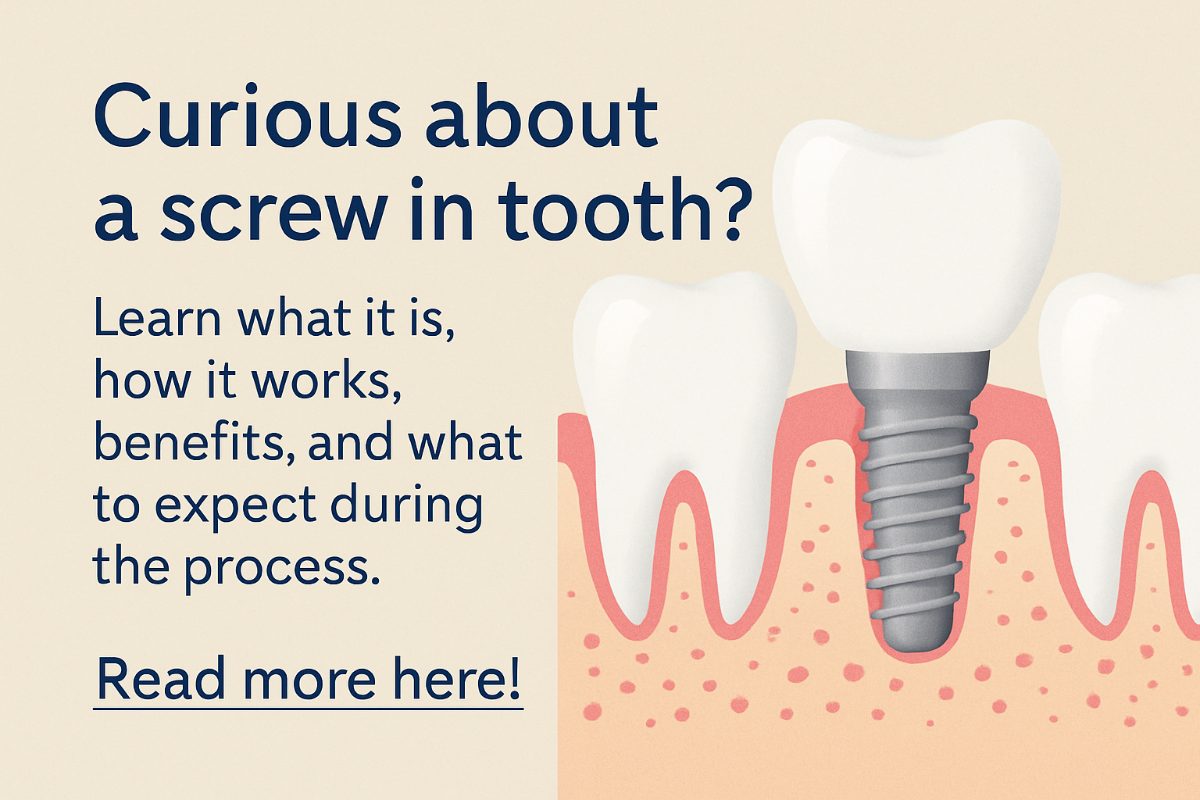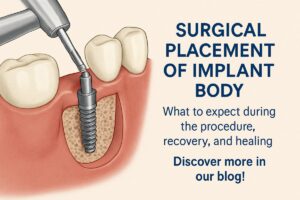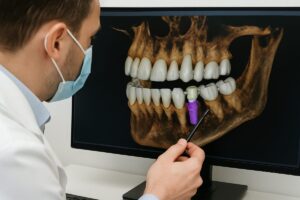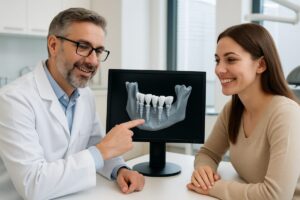A “screw in tooth” is a common way patients describe a dental implant. This article clears up whether a screw in tooth is really an implant and what to expect if you’re considering one. Read on for a simple explanation of how these screw-based restorations work, who is a good candidate, risks, costs, and practical questions to ask your dentist.
What is a “screw in tooth”?
Many people use the phrase “screw in tooth” to describe a dental implant — a small titanium screw placed into the jawbone to replace a missing tooth root. That screw supports an abutment and a crown or other prosthetic. In short, when someone says “screw in tooth,” they most likely mean a modern dental implant system.
How a “screw in tooth” dental implant works
A typical implant system has three parts: the implant (the metal screw), the abutment (a connector), and the crown (the visible tooth). After placement, the bone heals and fuses to the screw — a process called osseointegration. This fusion creates a stable foundation so the crown feels and functions like a natural tooth.
Common types of screw-based solutions
Single-tooth screw implant
A single-tooth screw implant replaces one missing tooth. The implant is placed in the jaw and later fitted with an abutment and a custom crown that matches the surrounding teeth.
Screw-retained bridges and All-on-X
When multiple teeth are missing, screw-retained bridges or All-on-X solutions use several implants to support a fixed prosthesis. All-on-X (often All-on-4) fits a full arch on a few strategically placed implants for a stable, fixed smile.
Benefits of a screw in tooth
Screw-based implants offer strong bite force, long-term durability, and help preserve jawbone by stimulating it like a natural root. Screw-retained prosthetics are often easier to remove for repairs or adjustments, making maintenance simpler over time.
Risks, limitations, and when it might not be right
Risks include infection, implant failure, or the need for bone grafting if bone is insufficient. Certain health factors — heavy smoking, uncontrolled diabetes, or poor oral hygiene — can lower success rates. Implants also require healing time and multiple visits.
Who makes a good candidate for a screw in tooth?
Good candidates are generally in good overall health, have adequate jawbone, and commit to oral hygiene and follow-up care. Older age alone isn’t a barrier, but medical conditions and lifestyle factors need review by a clinician.
What to expect during the process
Consultation and planning
Expect an exam, X-rays or CBCT 3D scans, and a treatment plan that maps implant position and timing.
Placement and restoration
Placement involves minor surgery to insert the screw, a healing period for osseointegration, then attachment of the abutment and final crown or prosthetic.
Recovery, care, and long-term maintenance
Short-term recovery includes swelling and a few days of discomfort. Watch for signs of infection. Long-term care is like natural teeth: regular brushing, flossing, and dental checkups help implants last decades.
Cost and financing basics
Costs vary by the number of implants, need for grafting, and materials. Many practices offer financing, in-office plans, or third-party lenders — ask about options and what’s included in the quote.
Questions to ask your dentist about a “screw in tooth”
- How many implants have you placed and what are your success rates?
- Will you use CBCT 3D imaging for planning?
- What sedation or comfort options do you offer?
- Is the prosthetic screw-retained or cemented, and why?
- Do you place the implant yourself or refer to a specialist?
- What warranties or guarantees do you provide?
- What alternatives exist besides a screw in tooth?
- How much healing time and follow-up care should I expect?
About the practice and expert care
Gwinnett Dental Implant Center in Lilburn, GA offers implant and periodontal care led by board-certified periodontists and an experienced oral surgeon. The team uses CBCT planning, Yomi robotic-guided placement, and an on-site master lab to deliver precise, natural-looking restorations for patients considering a screw in tooth Lilburn, GA.
Next steps / Call to action
If you’re curious whether a screw in tooth in Lilburn, GA is right for you, schedule a consultation to review imaging and options. The team can explain costs, timelines, and a personalized plan that fits your health and goals.








